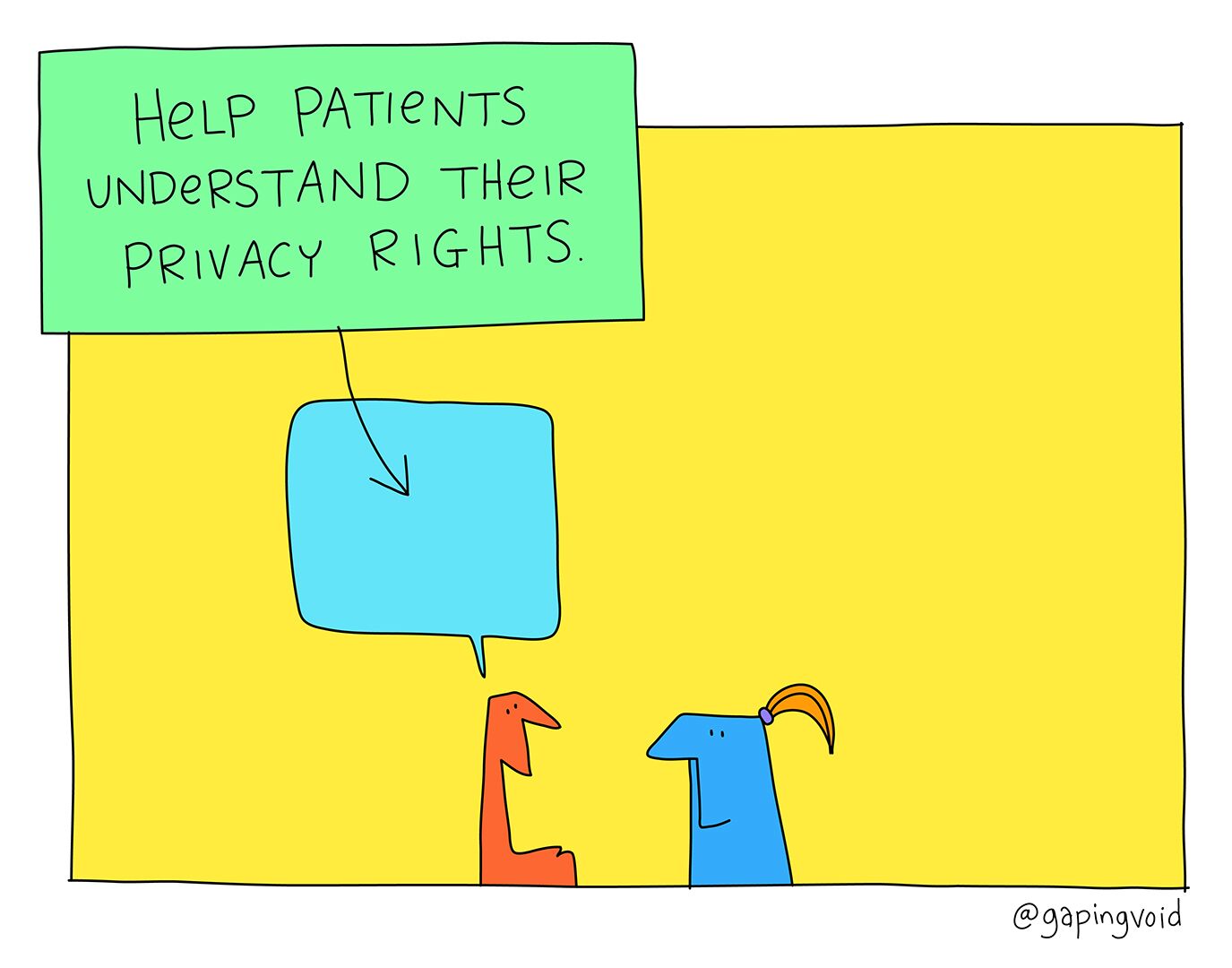Patients do not understand their privacy rights – it’s our job to explain them

It’s not enough for health care organizations to respect patient privacy rights. I believe we have an obligation to help our patients understand those rights and activate them.
There is a definite power imbalance between health care providers and patients when it comes to their understanding of privacy.
Patients (and their caregivers) don’t receive a public education on their privacy rights. They don’t know what they are allowed to have (access to their records) or allowed to do (have their information shared with their health care providers or restrict access to their information) and what they should expect (a safe environment for their information).
We need to proactively tell them.
This might be done in formal ways, such as through your organization’s privacy policy statement. But how many people actually come to read that?
You can also use informal ways such as:
- Orientation materials
- Brochures in the office
- Posters on walls
- Videos on screens in waiting rooms
- Conversations with patients by clinical staff
- Peer support
- Website Q&A
- Social media posts
We also need to help them activate their privacy rights when asked to do so. Be patient and gentle. Patients almost never say the exact right thing or use the right process to exercise their rights. We have to help them with the language, find the forms or tell the right people.